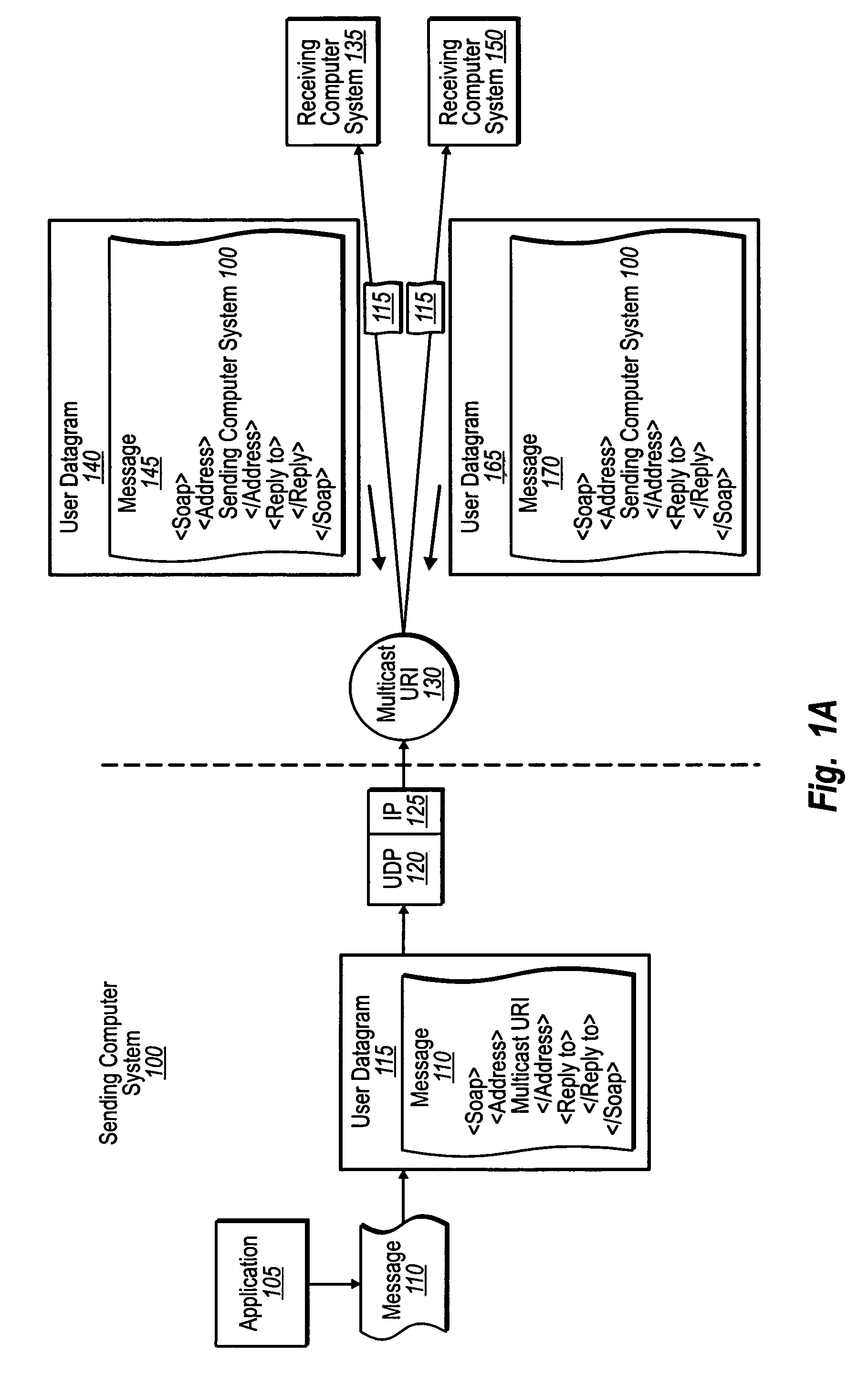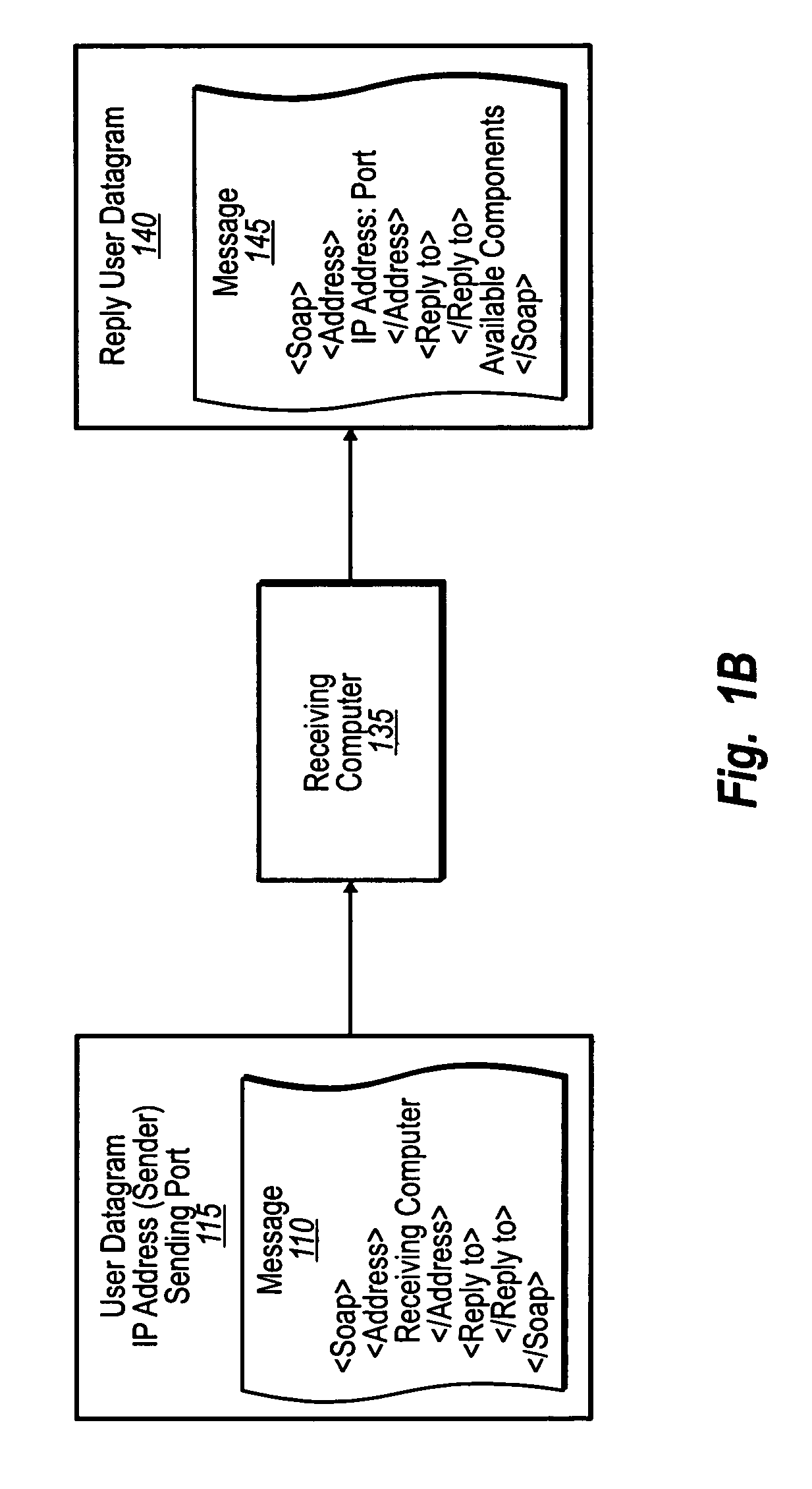Querying for services using soap over UDP
a technology of querying and services, applied in the field of system, method and computer program products for communicating soap messages, can solve the problems of increasing the difficulty of sharing data and resources on a network, network administrators are increasingly limiting the amount of files and resources available, and computer systems using different operating systems cannot easily share files or resources with another
- Summary
- Abstract
- Description
- Claims
- Application Information
AI Technical Summary
Benefits of technology
Problems solved by technology
Method used
Image
Examples
example 1
text / xml
[0032]Example 1 is distinguished from Example 2 below primarily by the first byte. For example, if the first byte is non-zero (i.e., “1”), then the encoding type will indicate that it is based on Example 1. If the first byte is “0”, however, then the encoding type will be indicated as being based on Example 2. This is possible at least in part since text / xml cannot start with byte 0. The following are extensible elements in a sequence of bytes for Example 1.
utf8()
example 2
Other Encodings
[0033]Example 2 illustrates the use of additional syntax to identify the encoding, the additional syntax sometime being referred to as “message framing”. To identify the binary format (content-type: application / soap+msbinl), the sequence of bytes after the first byte (i.e., “0”) can be written as follows.[0034]octet(0)—FramingVersionRecord[0035]octet(1)—FramingMajorVersion[0036]octet(0)—FramingMinorVersion[0037]octet(1)—FramingModeRecord[0038]octet(1)—FramingSingletonMode[0039]octet(3)—FramingKnownEncodingRecord[0040]octet(7)—FramingBinaryKnownEncoding[0041]octet(5)—FramingUnsizedEnvelope
utf8()
[0042]Framing, however, can also be used to identify other encodings, such as Message Transmission Optimization Mechanism (“MTOM”), as shown below.[0043]octet(0)—FramingVersionRecord[0044]octet(1)—FramingMajorVersion[0045]octet(0)—FramingMinorVersion[0046]octet(1)—FramingModeRecord[0047]octet(1)—FramingSingletonMode[0048]octet(3)—FramingKnownEncodingRecord[0049]octet(7)—FramingM...
PUM
 Login to View More
Login to View More Abstract
Description
Claims
Application Information
 Login to View More
Login to View More - R&D
- Intellectual Property
- Life Sciences
- Materials
- Tech Scout
- Unparalleled Data Quality
- Higher Quality Content
- 60% Fewer Hallucinations
Browse by: Latest US Patents, China's latest patents, Technical Efficacy Thesaurus, Application Domain, Technology Topic, Popular Technical Reports.
© 2025 PatSnap. All rights reserved.Legal|Privacy policy|Modern Slavery Act Transparency Statement|Sitemap|About US| Contact US: help@patsnap.com



